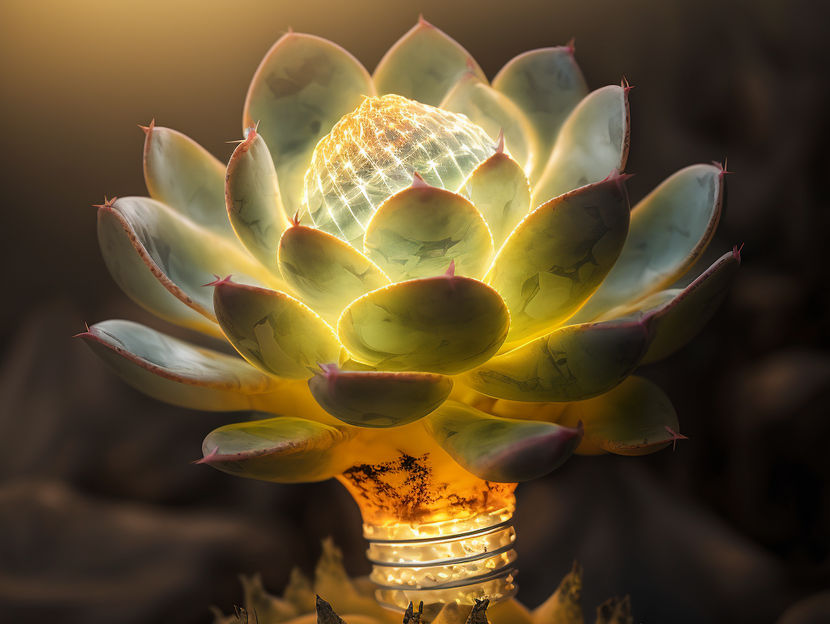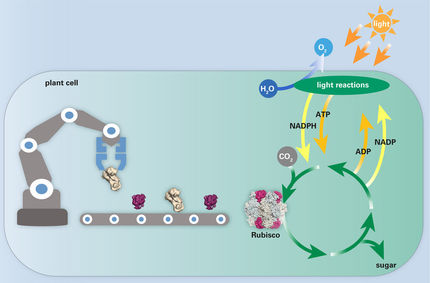Producing ‘green’ energy — literally — from living plant ‘bio-solar cells’
Scientists have turned to photosynthesis to generate current
Though plants can serve as a source of food, oxygen and décor, they’re not often considered to be a good source of electricity. But by collecting electrons naturally transported within plant cells, scientists can generate electricity as part of a “green,” biological solar cell. Now, researchers reporting in ACS Applied Materials & Interfaces have, for the first time, used a succulent plant to create a living “bio-solar cell” that runs on photosynthesis.

Symbolic image
Computer-generated image
In all living cells, from bacteria and fungi to plants and animals, electrons are shuttled around as part of natural, biochemical processes. But if electrodes are present, the cells can actually generate electricity that can be used externally. Previous researchers have created fuel cells in this way with bacteria, but the microbes had to be constantly fed. Instead, scientists, including Noam Adir’s team, have turned to photosynthesis to generate current. During this process, light drives a flow of electrons from water that ultimately results in the generation of oxygen and sugar. This means that living photosynthetic cells are constantly producing a flow of electrons that can be pulled away as a “photocurrent” and used to power an external circuit, just like a solar cell.
Certain plants — like the succulents found in arid environments — have thick cuticles to keep water and nutrients within their leaves. Yaniv Shlosberg, Gadi Schuster and Adir wanted to test, for the first time, whether photosynthesis in succulents could create power for living solar cells using their internal water and nutrients as the electrolyte solution of an electrochemical cell.
The researchers created a living solar cell using the succulent Corpuscularia lehmannii, also called the “ice plant.” They inserted an iron anode and platinum cathode into one of the plant’s leaves and found that its voltage was 0.28V. When connected into a circuit, it produced up to 20 µA/cm2 of photocurrent density, when exposed to light and could continue producing current for over a day. Though these numbers are less than that of a traditional alkaline battery, they are representative of just a single leaf. Previous studies on similar organic devices suggest that connecting multiple leaves in series could increase the voltage. The team specifically designed the living solar cell so that protons within the internal leaf solution could be combined to form hydrogen gas at the cathode, and this hydrogen could be collected and used in other applications. The researchers say that their method could enable the development of future sustainable, multifunctional green energy technologies.
Original publication
Other news from the department science

Get the life science industry in your inbox
By submitting this form you agree that LUMITOS AG will send you the newsletter(s) selected above by email. Your data will not be passed on to third parties. Your data will be stored and processed in accordance with our data protection regulations. LUMITOS may contact you by email for the purpose of advertising or market and opinion surveys. You can revoke your consent at any time without giving reasons to LUMITOS AG, Ernst-Augustin-Str. 2, 12489 Berlin, Germany or by e-mail at revoke@lumitos.com with effect for the future. In addition, each email contains a link to unsubscribe from the corresponding newsletter.





















































